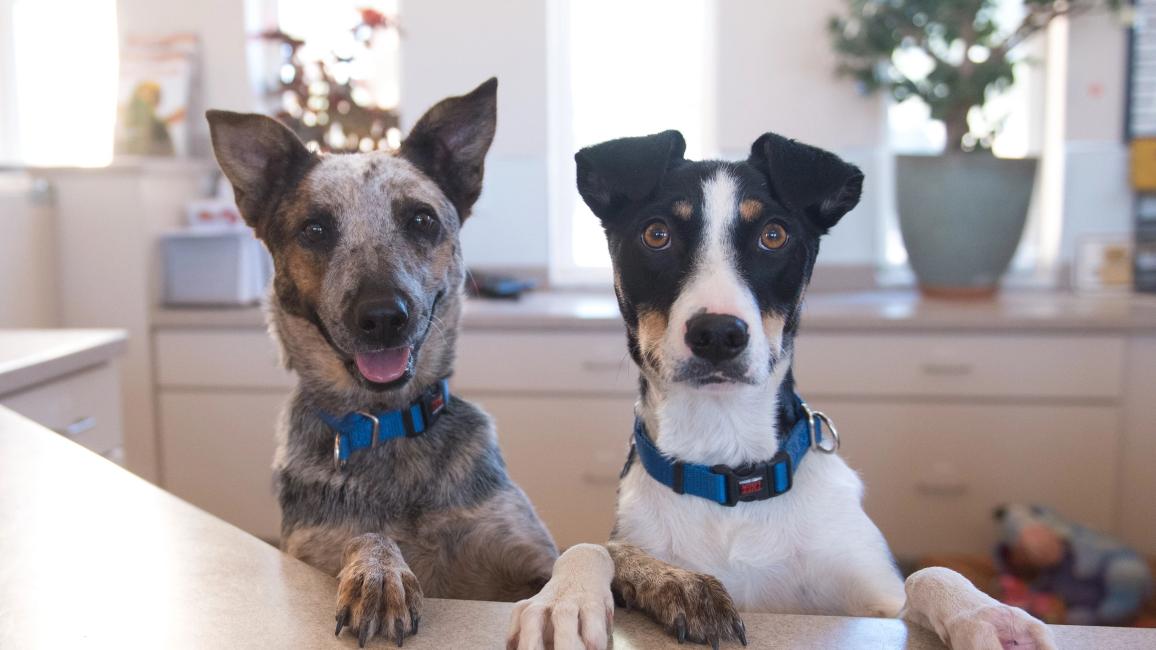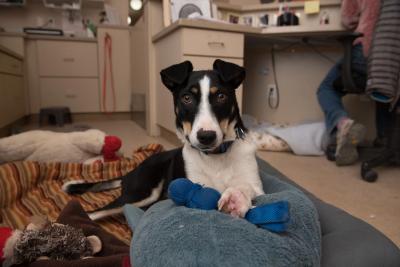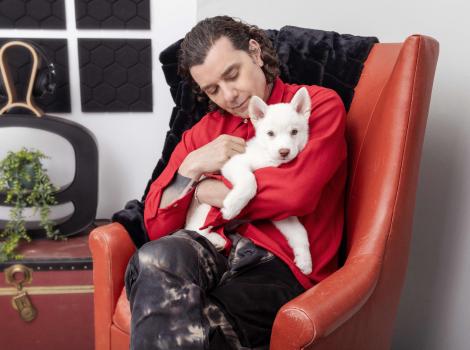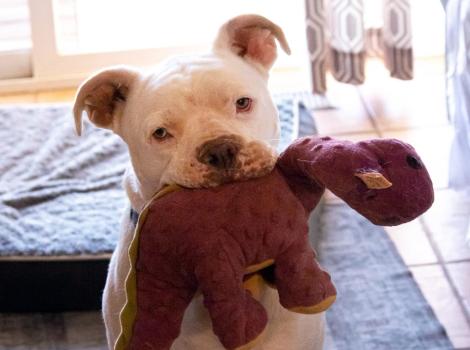Best friends at Best Friends: Dogs find their footing

It’s said that laughter is the best medicine, and while they can’t quite laugh like us, we’re pretty sure the concept holds true for dogs, too. Just think about some of the things that make us laugh — like spending time with friends and playing games with them. Dogs love that stuff just as much as we do. Maybe even more.
For Colette and Sarita, having a friend to pal around with certainly seemed to make a difference. Though they took slightly different routes to land at Best Friends Animal Sanctuary, the dogs had both been found as strays — and they’d needed help. Shy Sarita needed gentle encouragement and a confident companion to coax her out of her shell. Colette, meanwhile, needed someone to lean on as she recovered from a big surgery.
Best Friends’ goal is for all shelters to reach no-kill by 2025, which means working together with other animal welfare organizations to save pets who need extra care or time. And, sometimes, the pets help each other out, too.

The healing begins
A good Samaritan had found Colette on the side of the road just north of the Sanctuary. She had no collar and no immediately obvious home or family nearby, and the toes of her left front paw were severely injured. Realizing she needed help, the person who found her reached out to Best Friends, and soon Colette was headed for the Best Friends Animal Clinic. Meanwhile, staff at the Sanctuary reached out to the local police to report the found pooch in case there was a family looking for her.
The moment she arrived Colette’s treatment began. The damage to her foot was extensive, and the wound was infected. It wouldn’t be possible to save her two middle toes, so the decision was made to amputate them.
Colette, though a bit shy and unsure of all the people fussing over her, was a well-mannered patient through all of it. And just a few short days after arriving at the Sanctuary, a successful surgery was behind her, and it was time for Colette to spend some quiet time recovering in her new home-between-homes.
[The right roommate helps calm anxious dog]
She moved in behind the front desk at Dogtown, where she could watch the comings and goings of staff, visitors, and volunteers while she got her feet under herself once again. It was the perfect setup; her paw could be kept clean and clear of sneaky sand shifting under her bandages, and she could get all the bedrest she needed on a big comfy pile of cushions. Plus, the close-yet-comfortable proximity meant she warmed up to her new human friends quickly (the treats helped, too).
Then, Sarita arrived from Navajo Nation Animal Control. She’d been living outside on her own and was a bit nervous around people. And for dogs like Sarita, a more confident canine is often the best at getting them to open up. So when caregivers were looking for a good place for Sarita to bunk down with a roommate who could help her out, their sights settled on Colette and her deskside den.
When the two dogs met, they connected immediately. “It was instantaneous, incredible, ridiculous,” recalls Jeri Harrington, the operations support specialist whose desk space the doggy duo was sharing.

Pooch pals put their best paws forward
“(Colette and Sarita) would play,” Jeri says, amusement clear in her voice. “They would take all of the toys out of the box, they’d toss them in the air, and they’d be under my desk playing.” By the end of the day, it looked like a toy store had been upended.
Colette, who’d been walking well enough soon after her surgery when her foot was still bandaged, was a little less steady when the wrap came off. Finally feeling what it was like to get around with just two toes on one foot was a little awkward. She was more concerned about keeping up with her new friend though. Jeri says Colette would sometimes end up hopping without placing her paw down, but she got stronger with every bounce and twirl she made as she and Sarita horsed around.
They both got plenty of practice with people together, too. There was almost always someone with them at the desk during the day — if not Jeri, then another staff member just as happy to ply them with treats and gentle conversation — and they got to see every volunteer who arrived. When tours stopped by, if Colette and Sarita were feeling up for it, they’d allow a nice scratch behind their ears. Sarita was more than happy to follow Colette’s lead when it came to people, though slowly but surely she started looking forward to the interactions all on her own.
[Dreams come true for doggy duo with tricky behaviors]
Before long, the two once-strays were doing better than ever. While neither had been sure what to think about leashes and harnesses when they arrived, walks with staff and volunteers had turned them both into old pros. Colette’s steps on her two-toed foot became more sure, and Sarita’s shyness was melting away. And it was time for them to each take another big step forward.
Healed from their time together with each other and their human friends — both physically and emotionally — Colette and Sarita were ready to move along. For Sarita, a little more time in a foster family with another good dog friend prepared her for when she got adopted and moved in with a family all her own. And Colette, her foot steady beneath her, caught a ride with a few other dogs to a rescue organization in Colorado to get even more potential adopter attention.
Now, they’ve got even more life-changing friends to look forward to meeting.
Let's make every shelter and every community no-kill by 2025
Our goal at Best Friends is to support all animal shelters in the U.S. in reaching no-kill by 2025. No-kill means saving every dog and cat in a shelter who can be saved, accounting for community safety and good quality of life for pets.
Shelter staff can’t do it alone. Saving animals in shelters is everyone’s responsibility, and it takes support and participation from the community. No-kill is possible when we work together thoughtfully, honestly, and collaboratively.






